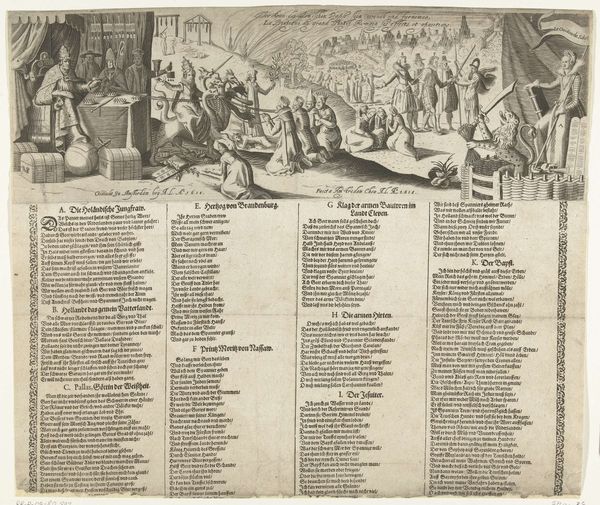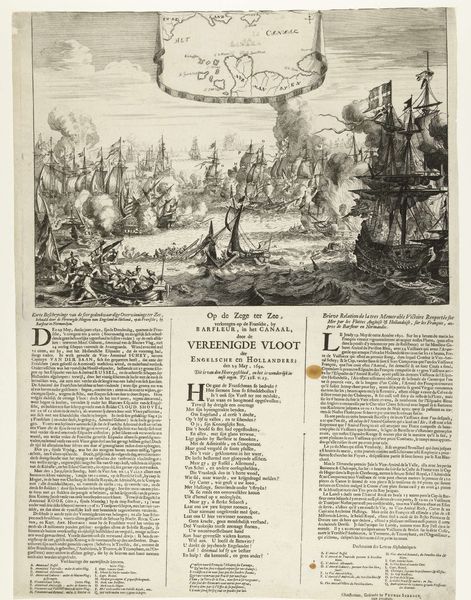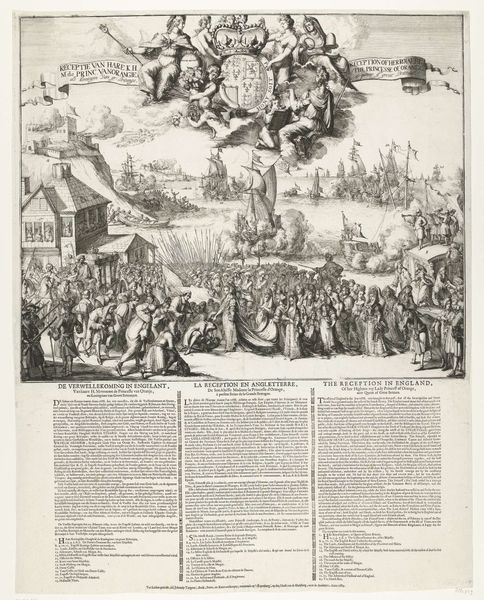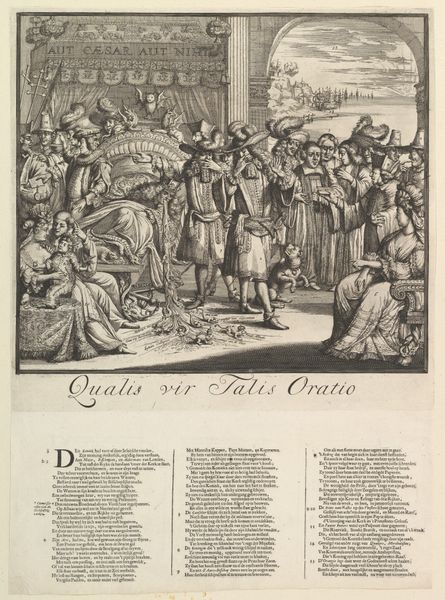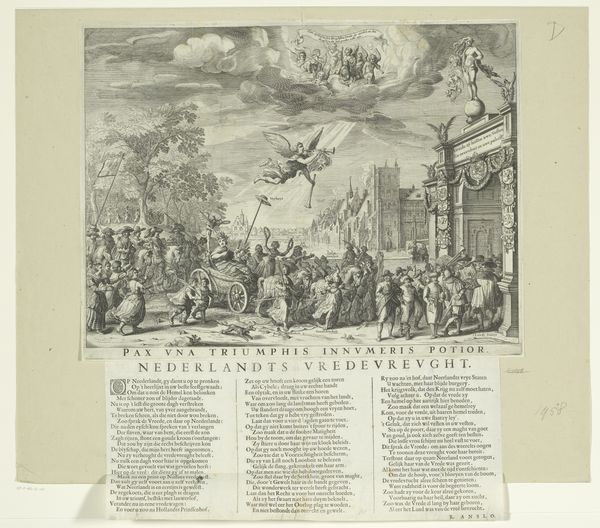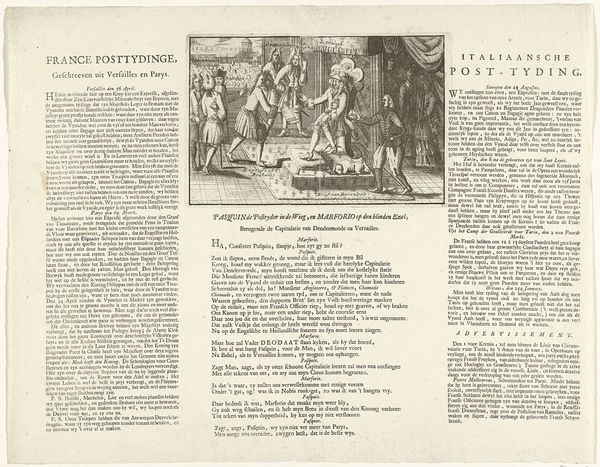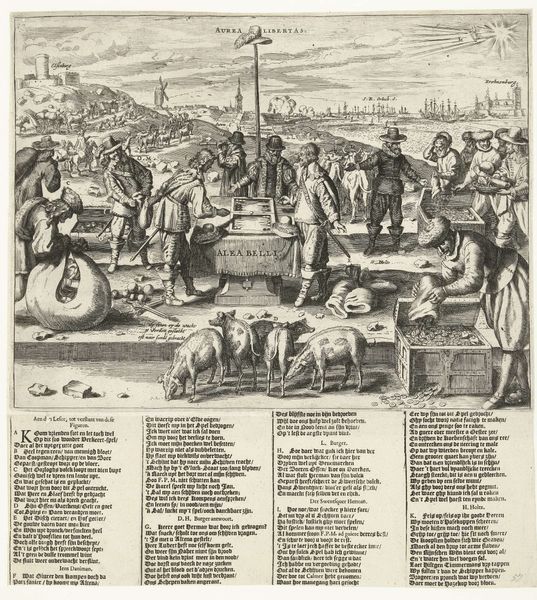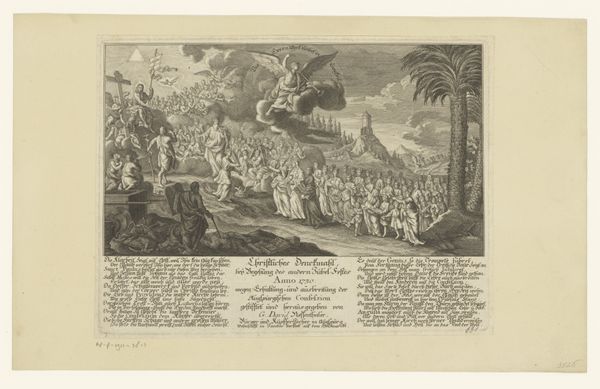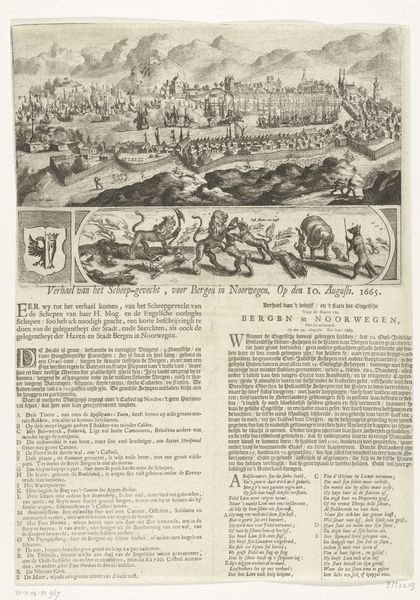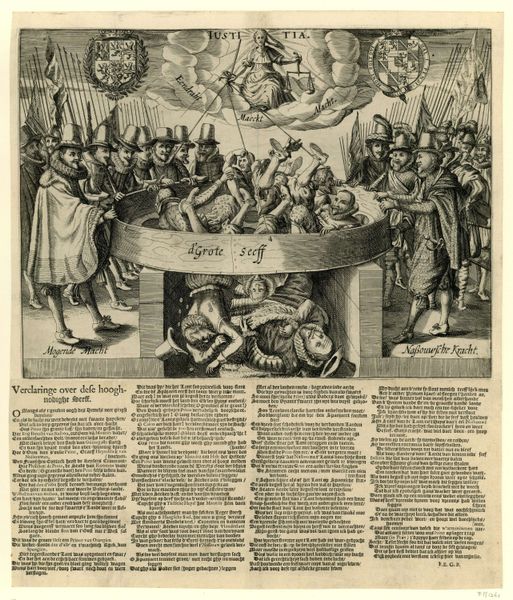
Allegorie op de situatie in het land tijdens het Bestand, 1615 1615
0:00
0:00
claesjanszvisscher
Rijksmuseum
print, etching, engraving
#
allegory
#
baroque
#
dutch-golden-age
# print
#
etching
#
landscape
#
genre-painting
#
history-painting
#
engraving
Dimensions: height 334 mm, width 362 mm
Copyright: Rijks Museum: Open Domain
Curator: This print, dating back to 1615, is entitled *Allegory on the Situation in the Country during the Truce*, and comes to us from the hand of Claes Jansz. Visscher. It's an engraving and etching that really captures the artistic styles and common themes of the Dutch Golden Age. Editor: My first impression? A really active, almost chaotic composition. So much visual information packed into one space, with allegorical figures that appear slightly unsettling. It feels quite charged. Curator: Indeed. Visscher masterfully utilizes allegory to communicate the political and social complexities of the Twelve Years' Truce. Observe the central female figure atop the cornucopia—she symbolizes the Dutch Republic. The items surrounding her provide more context to the print's overarching narrative. Editor: What strikes me is how Visscher manages to create a distinct division within the print. You've got this relatively tranquil scene on the left with the Dutch citizens. But on the right, there's the more aggressive group in what look like military uniforms. I would imagine that these two conflicting groups highlight the tensions of the Truce period, a time when peace existed in conjunction with conflict. Curator: Precisely! Notice the figure presenting what appear to be tablets and a lion which can be deciphered as representing Law and Strength. And above, a heavenly figure offers divine blessing. The symbols of justice and divine favor legitimized Dutch autonomy. It shows Visscher making potent commentary on Dutch governance. Editor: So it's not simply a rendering of figures, but an attempt to argue for the Dutch position within this period of political transition using recognizable symbolic vocabulary. It feels less like objective reporting, and more like state propaganda that takes inspiration from Biblical and Greco-Roman myth. Curator: In a way, yes. Artists of this era worked as cultural commentators. *Allegory on the Situation in the Country during the Truce* exemplifies this by using visual elements and an allegorical framework to translate and solidify social commentary. Editor: Looking closely at the materiality—the fine lines achieved through etching and engraving—it is also possible to observe an attempt at verisimilitude amid so many political, social, and symbolic referents. This offers us new possibilities for appreciating not only its message, but the incredible level of technical craft present. Curator: Absolutely, the print rewards close observation. By intertwining form, technique, and narrative, it becomes a powerful record of a pivotal moment in Dutch history, viewed through Visscher’s subjective and undoubtedly politicized gaze. Editor: This engraving-etching is now more than just ink and paper, but evidence of artistic ability wielded towards ideological persuasions during a crucial chapter of Dutch history.
Comments
No comments
Be the first to comment and join the conversation on the ultimate creative platform.
